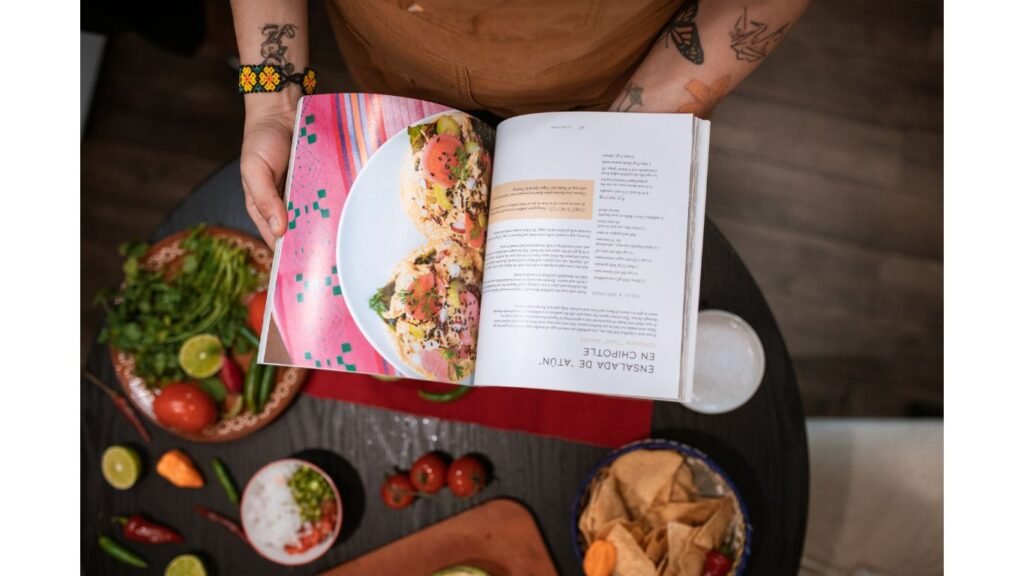The Importance of Personalization in Cooking
Personalization in cooking serves as a vital element that enhances the culinary experience, making it not only enjoyable but also meaningful. Individual preferences, family traditions, and cultural heritage play significant roles in shaping one’s approach to food preparation. When individuals personalize their cooking, they often find deeper satisfaction in their meals, as these meals can evoke emotional connections and shared memories. Recipes passed down through generations often hold sentimental value, reminding us of family gatherings or celebrations. This emotional resonance fosters a closer bond among those who share the meal, reinforcing relationships and creating a sense of belonging.
A personalized cookbook allows individuals to curate recipes that resonate with their unique experiences and tastes. By accommodating specific dietary needs, such as vegetarianism, gluten intolerance, or food allergies, a personalized approach to cooking ensures that meals are not just nutritious but also enjoyable. Tailoring recipes to reflect lifestyle choices or health goals allows cooks to take ownership of their culinary journey, enhancing their engagement with the cooking process. Moreover, adapting recipes to suit local ingredients or seasonal produce can further enrich the cooking experience, promoting sustainability and supporting local economies.
Additionally, personalization extends beyond dietary preferences to encompass flavor profiles and cooking techniques that align with individual tastes. For instance, a cook may prefer spicy flavors or may be inclined toward traditional methods of preparation. By including these aspects in their personalized cookbook, individuals can explore creativity while developing their culinary skills in a manner that feels authentic to them. Ultimately, catering to these diverse elements culminates in meals that resonate more profoundly with the cook and their loved ones, strengthening the bond shared over the dining table.
Steps to Compile Your Personalized Cookbook
Creating a personalized cookbook is a rewarding endeavor that begins with a brainstorming phase. This initial step involves gathering your favorite recipes, which can be sourced from various places including family heirlooms, online collections, or those special dishes you’ve perfected over the years. Keep a dedicated notebook or digital file where you can jot down these recipes as they come to mind. This stage is crucial as it serves as the foundation of your unique culinary project.
Next, it is beneficial to select a theme or focus for your cookbook. This could be based on specific cuisines, dietary preferences, occasions, or a combination of any elements that reflect your culinary journey. For instance, you could create a cookbook centered on “Comfort Foods” or perhaps one exclusively featuring “Seasonal Dishes”. Establishing a clear theme will help streamline your selection process and provide coherence to the final compilation.
Once you have a collection of recipes and a defined theme, the next step involves organizing your recipes efficiently. Consider categorizing them into sections such as appetizers, main courses, desserts, and beverages. This organization not only improves readability but also makes it easier for you and your readers to navigate through the book. Additionally, deciding on the format of your cookbook is essential. Will it be a digital cookbook accessible on various devices or a physical one that you can hold and cherish? Each format has its benefits, so choose one that aligns with your personal preferences.
Lastly, enhancing your cookbook with personal notes, anecdotes, and cooking tips adds a layer of uniqueness that cannot be replicated. Sharing a brief story behind a recipe or useful cooking advice not only makes the cookbook more engaging but also infuses it with your personal touch. By following these steps, you will be well on your way to creating a cherished compilation that reflects your culinary passions and experiences.
Designing and Formatting Your Cookbook

When embarking on the journey of creating a personalized cookbook, the aesthetics play a crucial role in engaging the reader. A well-designed cookbook not only serves as a collection of recipes but also as a visual feast that draws in the reader. The layout should be intuitive, allowing for seamless navigation through a variety of dishes. Consider categorizing recipes into sections such as appetizers, main courses, and desserts to create a logical flow that enhances the cooking experience.
Also see Topic: Best Cooking Gifts for Dads, Moms, Teenagers, and Chefs for Birthdays and Christmas
Typography is another pivotal element in cookbook design. Choose fonts that are both legible and complement the style of your culinary creations. A combination of classic and modern typefaces can convey a sense of elegance while ensuring that instructions are easy to read, even for novice cooks. Additionally, varying font weights and sizes for headings, subheadings, and body text can create a hierarchy that guides the eye through the pages.
Images are essential in captivating your audience and presenting each recipe in the best light. High-quality photographs of the finished dishes can inspire readers to try their hand at cooking while providing a mouthwatering preview of what to expect. Ensure that images are well-lit and styled to match the overall theme of your cookbook. Consistency in image placement and size will contribute to the overall polish of your publication.
If you are not familiar with design software, there are numerous user-friendly tools available that can help you create a stunning layout. Programs like Canva or Adobe InDesign offer templates specifically tailored for cookbooks, allowing for easy customization to reflect your unique culinary point of view. Alternatively, seeking the expertise of a professional designer can significantly enhance the visual appeal of your cookbook, ensuring that it stands out in the culinary landscape.
Sharing and Utilizing Your Personalized Cookbook
Once you have crafted your personalized cookbook, the next step involves sharing it with family and friends, enhancing not only your culinary experiences but also building connections through food. There are numerous ways to present your cookbook as a thoughtful gift. A beautifully bound print version, complete with personal notes and anecdotes, can evoke fond memories and inspire loved ones to create their own dishes. Another option is to share a digital format, whether as an e-book or a PDF, allowing for easy distribution and access. This can be particularly convenient for family members living far away, ensuring they can engage with your culinary traditions regardless of their location.
Utilizing your personalized cookbook in everyday life can significantly elevate your cooking experience. By organizing recipes effectively, you can streamline meal planning for busy weeks, ensuring that you have nutritious options readily available. Furthermore, your customized cookbook can serve as a wonderful centerpiece for hosting gatherings. Consider using it as a guide when planning menus for special events, encouraging guests to draw inspiration from your curated selection of recipes. This not only showcases your gastronomic skills but also reflects your personality, making each gathering memorable.
An essential aspect of maintaining your personalized cookbook’s relevance lies in its continual evolution. As you discover new recipes, adapt existing ones, or even develop unique variations of traditional dishes, this collection can grow along with your culinary journey. Regularly update your cookbook by adding notes or photographs of your culinary adventures, creating a living document that captures your growth as a home cook. This dynamic approach ensures that your cookbook remains a cherished family resource, fostering a culture of cooking and sharing that can be passed down through generations.


